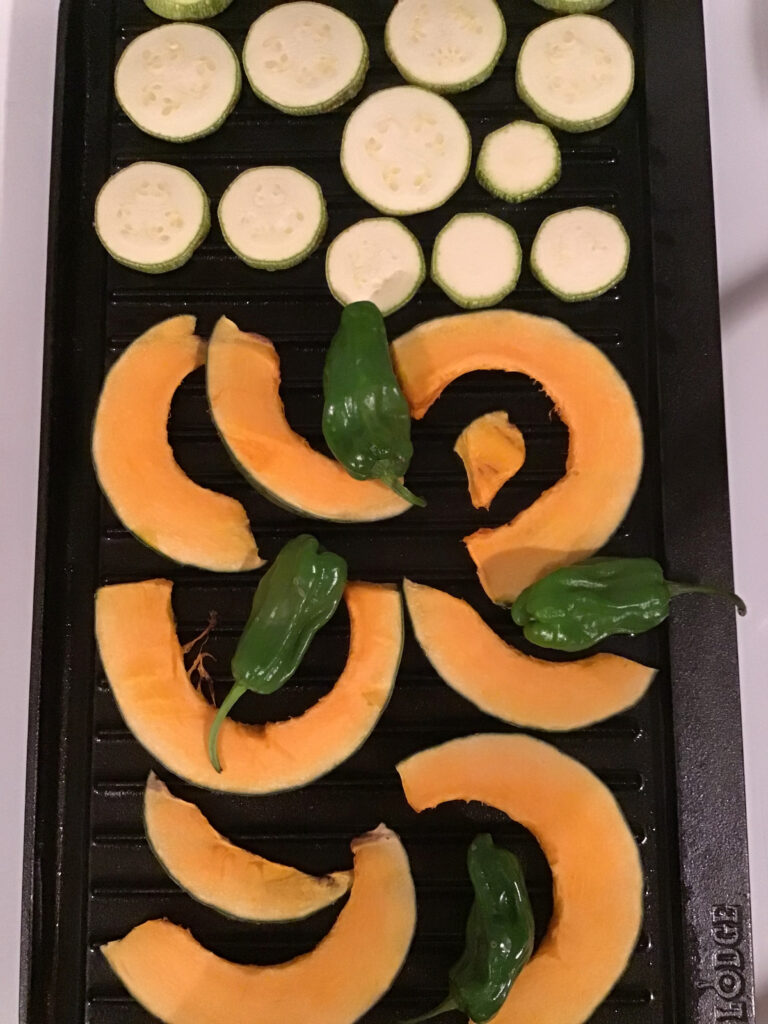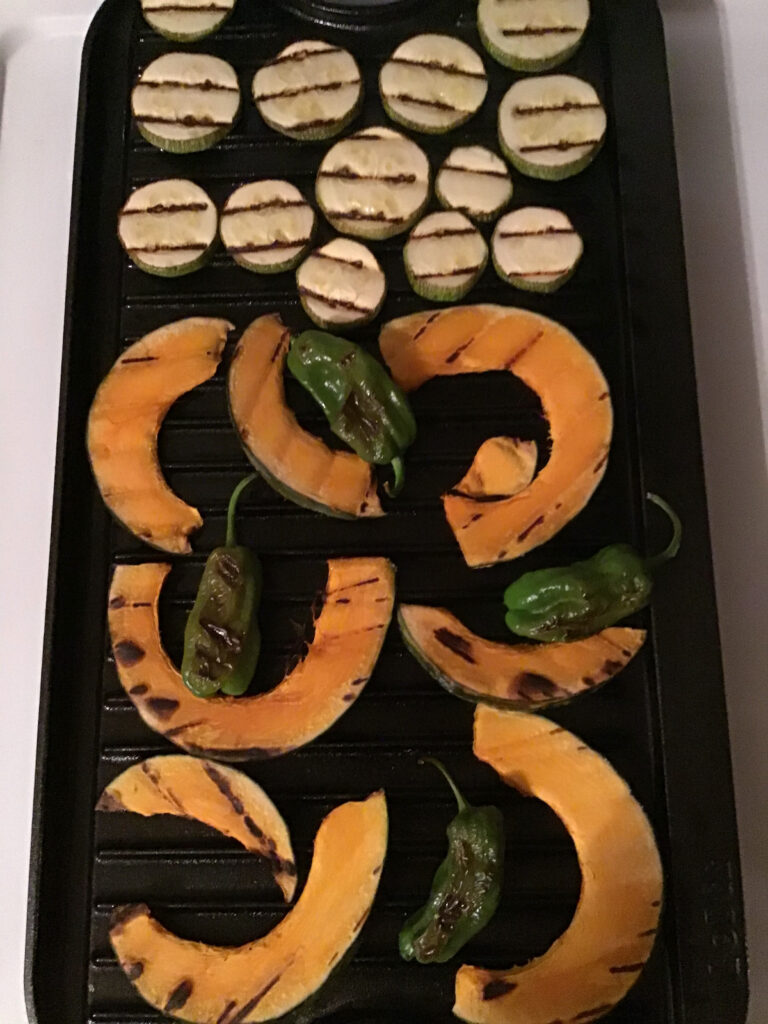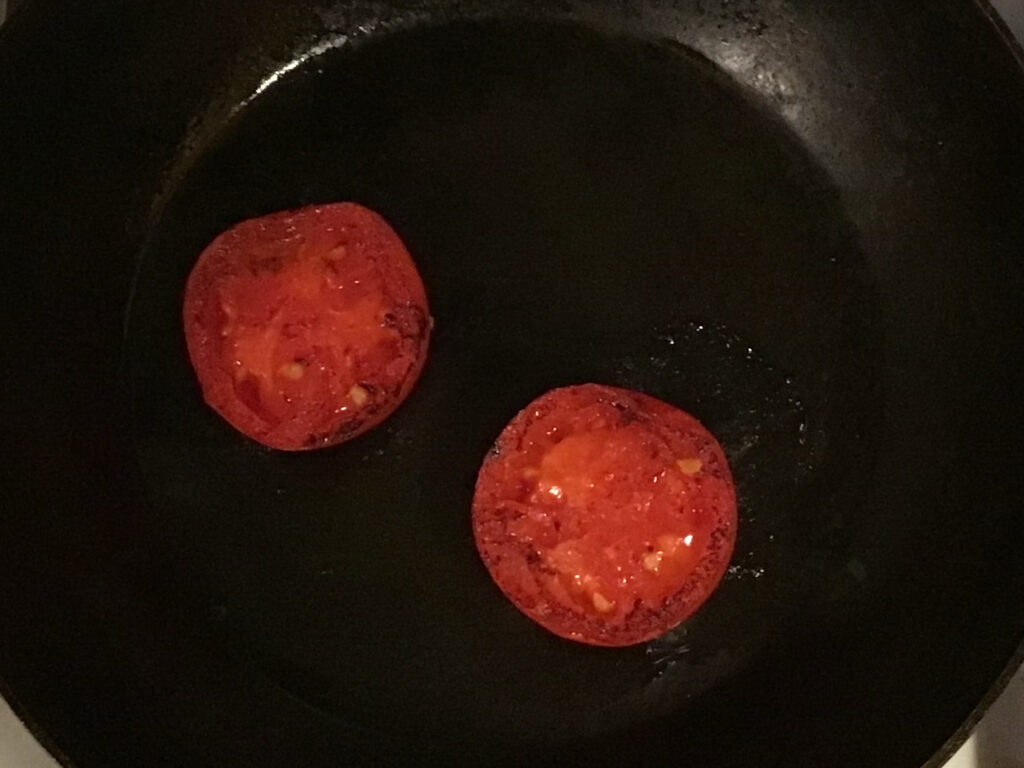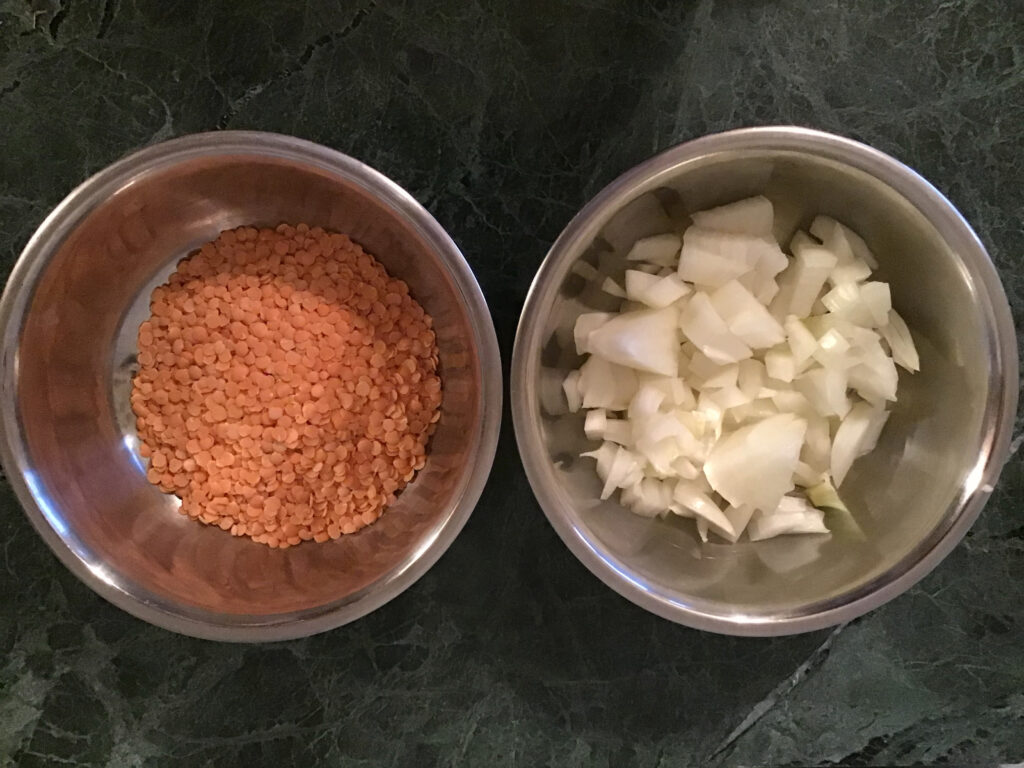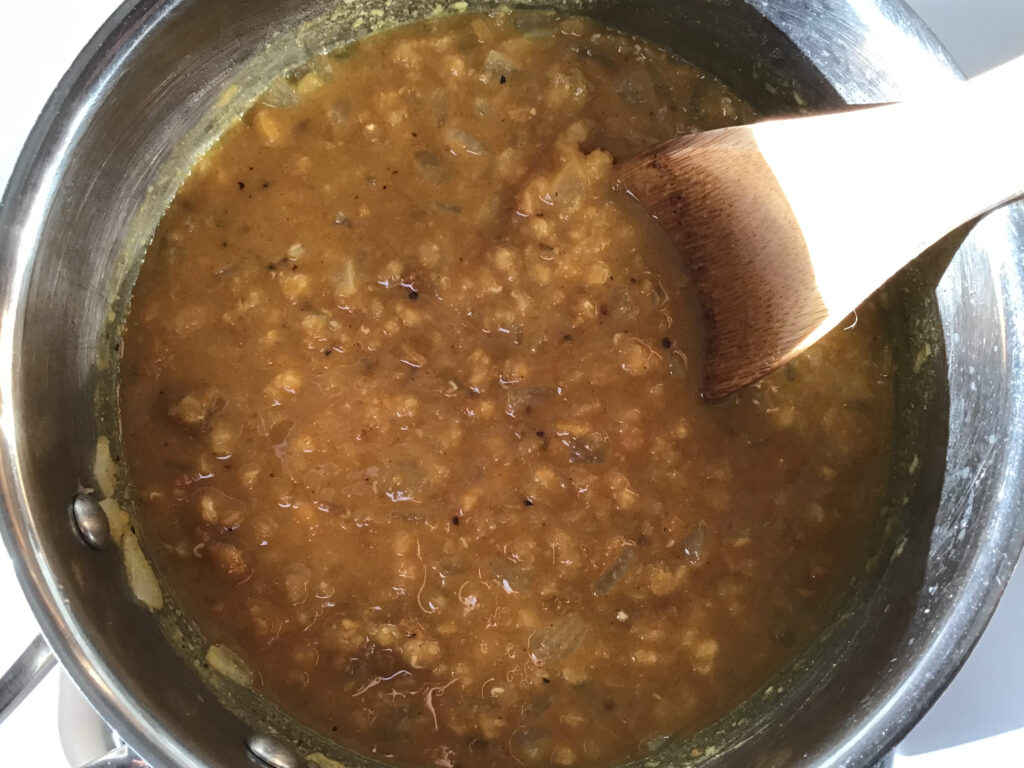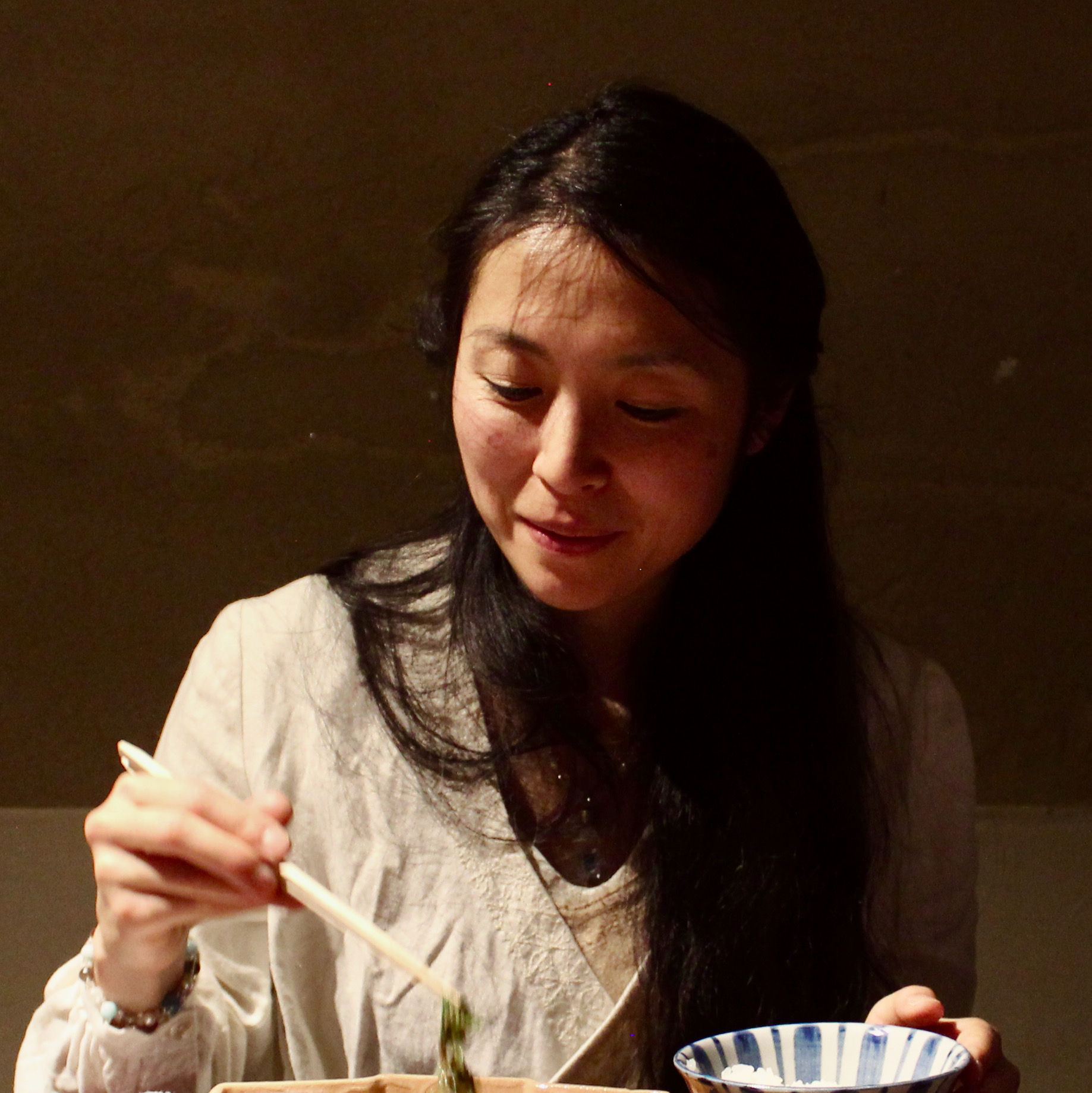Before the summer vegetables are disappearing from the farmers market, I had to make this curry!!
It has been such a precious time of year for me to see both summer and fall vegetables displayed together at the farmers market. Like I wrote in my article “Cucumber and Kabocha Salad with Tofu Mayonnaise,” in Japan, the season of kabocha squash starts in the summer. Therefore, there are some delicious dishes where this squash is cooked together with some summer vegetables, and they are so wonderful. Since it is such a small window of time when the summer vegetables can be cooked together with the kabocha squash, I have been anxious to make this curry before the season is out. I named this “Japanese Grilled Vegetable Curry”, but the original idea of this curry is from the Japanese “Summer Vegetable Curry.”
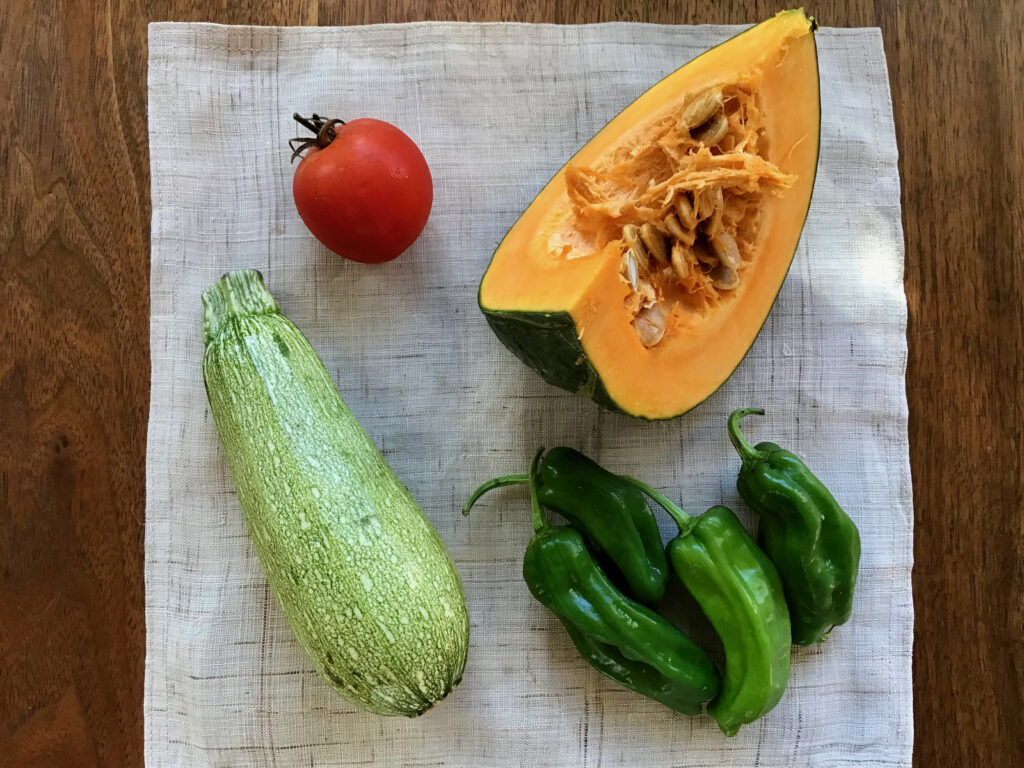
Curry is a Japanese national food?!
As oddly as it may sound, in Japan, people say that curry is the Japanese national food! In fact, this curry is, however, quite different from the Indian notion of curry. Although the same kind of curry spices are used to make the curry, Japanese people modulated and made their own version, since this exotic food culture was introduced to the country at the end of the 19th century, via England.
But why is it a national food? I don’t have the clear answer, but what I know is that many people love curry and a majority of Japanese people today have grown up eating curry as it has been served in school meals ever since the 1940’s. Also, many families in Japan eat curry at home regularly. I grew up eating it for dinner once a week, or every other week. Its frequent appearance at the dining table is not only because many of us love its flavor, but also it is largely due to the convenience of the meal’s preparation. You just need to cook rice and a pot of curry in which you can put different kinds of vegetables. And it is very easy to make because most of the people in Japan use what’s called “curry roux” to make the curry, which is cubes of curry paste. You sauté all the ingredients in a pot, cooking them with water, eventually adding this roux, and it is basically done! I have been making it for my family since I was in elementary school, when my mother was out at work.
How different is Japanese curry from Indian curry?
One of the most significant differences is that Japanese curry is very thick in texture. Japanese curry roux is made with large amounts of flour. Therefore, the curry becomes like a thick sauce rather than a soup. Another big difference is that the variety of spices used for Japanese curry are much simpler than Indian curries, that are made with many different spices through which each of the dishes have their own unique and complex flavor. The quality of rice also makes a difference. While basmati rice, with its light and dry texture, is eaten in India, Japanese people eat curry with Japanese short grain sticky rice. Lastly, Japanese curry is a simple one pot dish, whereas Indian people usually eat different kinds of curry dishes in a single meal.
As you can see now, Japanese curry has definitely come far from its origin of inspiration. When you don’t expect the authentic Indian flavor, this curry can be enjoyed so beautifully, as it is truly delicious! The sticky Japanese rice with the curry flavored sauce are a golden combination. It is aromatic and flavorful, as well as very nourishing, satisfying, and grounding. Also, there are various creative curries you can make in one pot, depending on the season, adding different combinations of vegetables.
Summer Vegetable Curry
This curry is, in fact, one of the rare curries that is common in Japan with the vegetarian option. On top of a simple curry sauce, there are different colorful deep fried summer vegetables decorated—any combination of zucchini, eggplant, kabocha squash, red and yellow sweet peppers, okra, and tomato. The meeting of the juiciness of the vegetables and the rich sauce is, indeed, very delicious. I got the following vegetables for my curry at the farmers market and my garden—zucchini, kabocha squash, shishito pepper, and tomato. And my version of summer vegetable curry is with grilled vegetables instead of deep fried! In this way, I don’t have to use or eat excess amounts of oil, and yet still enjoy the vegetables with their crunchy outside and soft inside, as well as their simple and rich flavor. Zucchini is soft and juicy. Kabocha squash adds beautiful and cheerful yellow color as well as sweet, rich, and comforting flavor. Shishito peppers bring wonderful bitterness. And tomato, when it is heated on the pan, becomes such a different and magically gorgeous flavor! For curry sauce, I made a simple one with onion and red lentils. Red lentils are beautifully compatible with this curry sauce, and they also add protein to this dish.
Gluten free curry paste as curry roux!
My curry roux is of course homemade, and it is a thick paste instead of the classic cubic shape, because I don’t use too much flour and oil that the cubic roux requires. And it is gluten-free! You don’t have to use the wheat flour to transform the liquid into a nicely thick sauce. Rice flour can do as equally wonderful a job as wheat or spelt flour.
I might be making an individual article for the curry roux one day in the future, but here I will share with you how you can make the roux. This recipe is for four servings. Since we are two of us, I make this amount of serving to use for one meal and save it for another meal.
- Heat up the pan and put 3 tbsp of curry powder to roast for a few minutes until they are fragrant. This will bring up more complex and deeper flavor of the spices.
- In another pan, heat up the coconut oil on medium low heat together with a 1/2 tsp of cumin seed, 1/4 tsp of mustard seed, 2 tsp of minced ginger, and 2 cloves of minced garlic. Heat the oil until the oil becomes fragrant.
- Add 1 minced medium size onion into the pan and sauté for about 10 minutes. Be careful not to burn the onion. Sautéing for a long time allows the onion’s flavor to transform into a sweeter one that brings the depth into the curry paste.
- Once sautéed, create a round shape and add the curry powder to the middle. Slowly, gently mix it with the onions.
- Add 1 cup of vegetable broth, 1 1/2 tsp of tomato paste, and 2 tsp of apple sauce. Turn the heat up to medium and keep stirring, and bring them to a boil.
- Turn the heat down to medium low and add 2 tsp of soy sauce, some salt, and freshly ground black pepper to adjust the flavor. Here, don’t make things too salty so that you can adjust the final flavor once you make the curry with this paste.
- Once seasonings are blended with curry, add 3 tbsp of rice flour. Keep stirring until it becomes a thick paste.
- Take the paste out from the pan and put into a container to have ready for your curry, or to store. The paste can be stored in the fridge for several weeks.
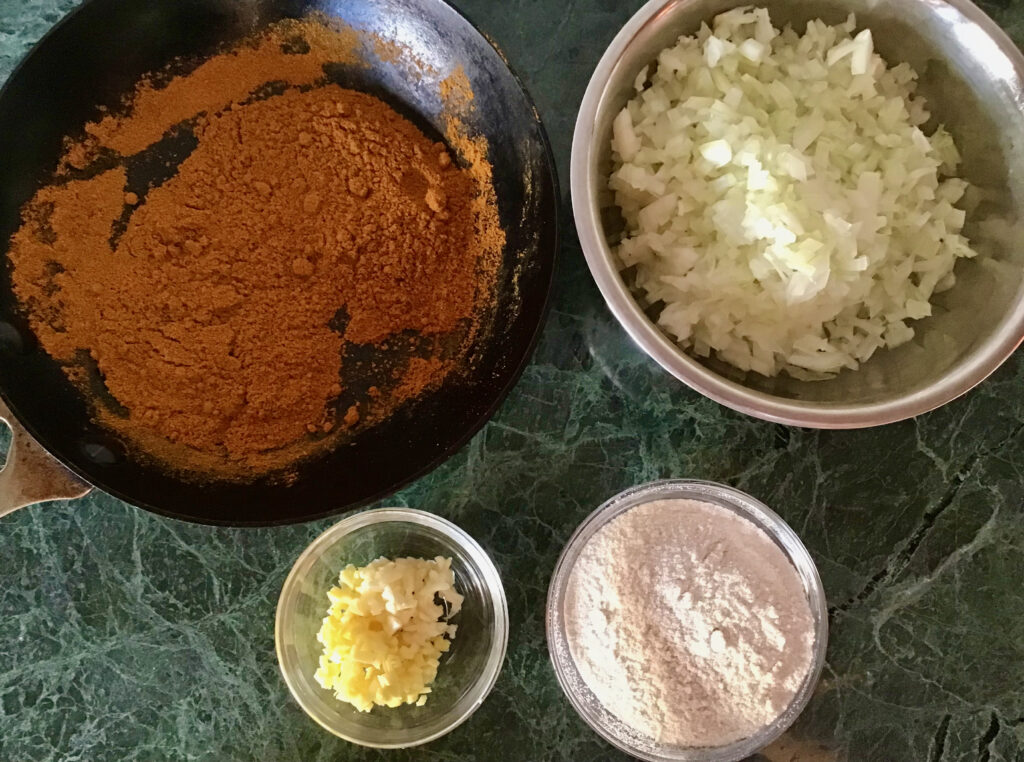
Ingredients for the curry paste 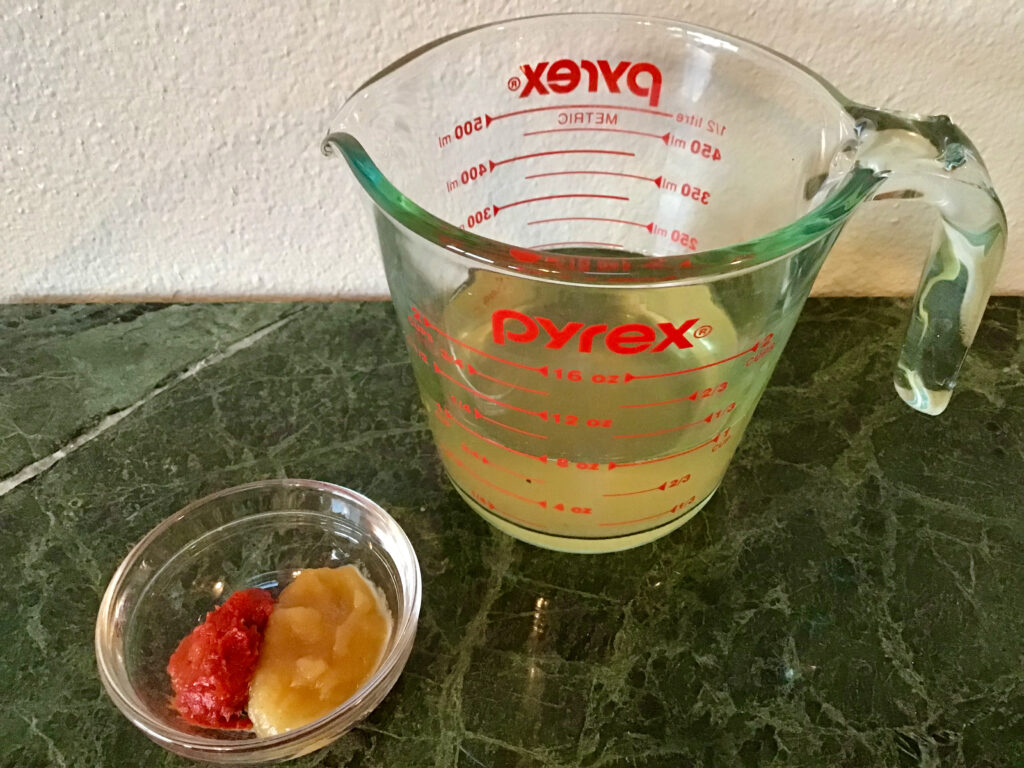
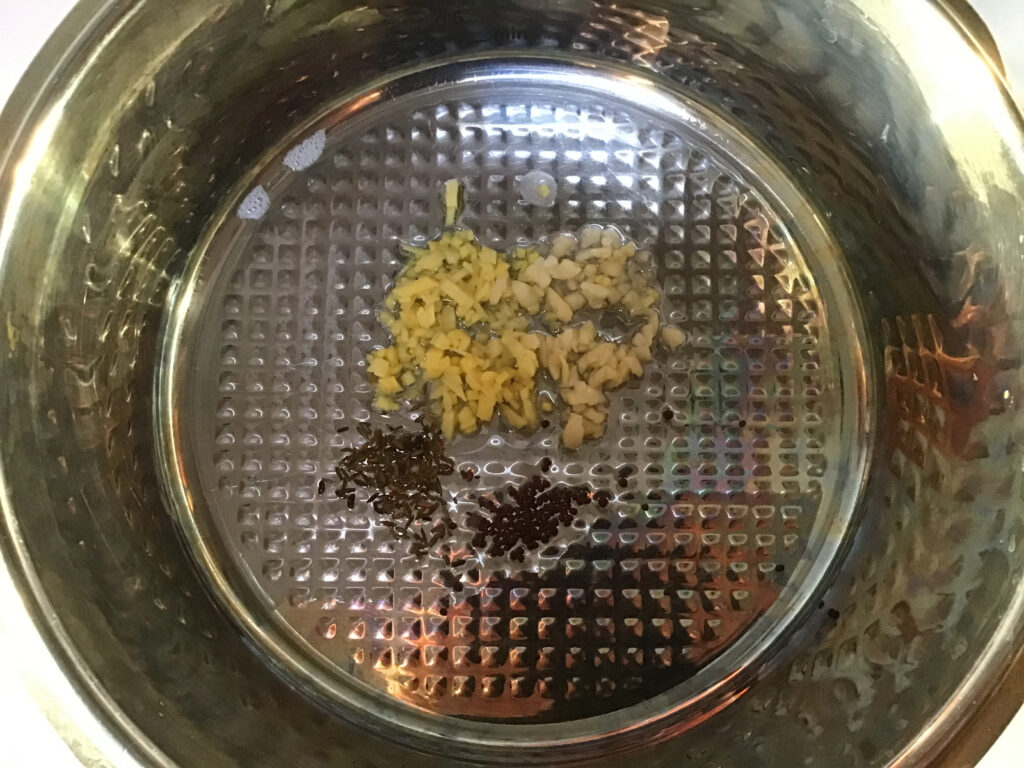
Heat the oil with cumin, mustard seed, ginger and garlic. 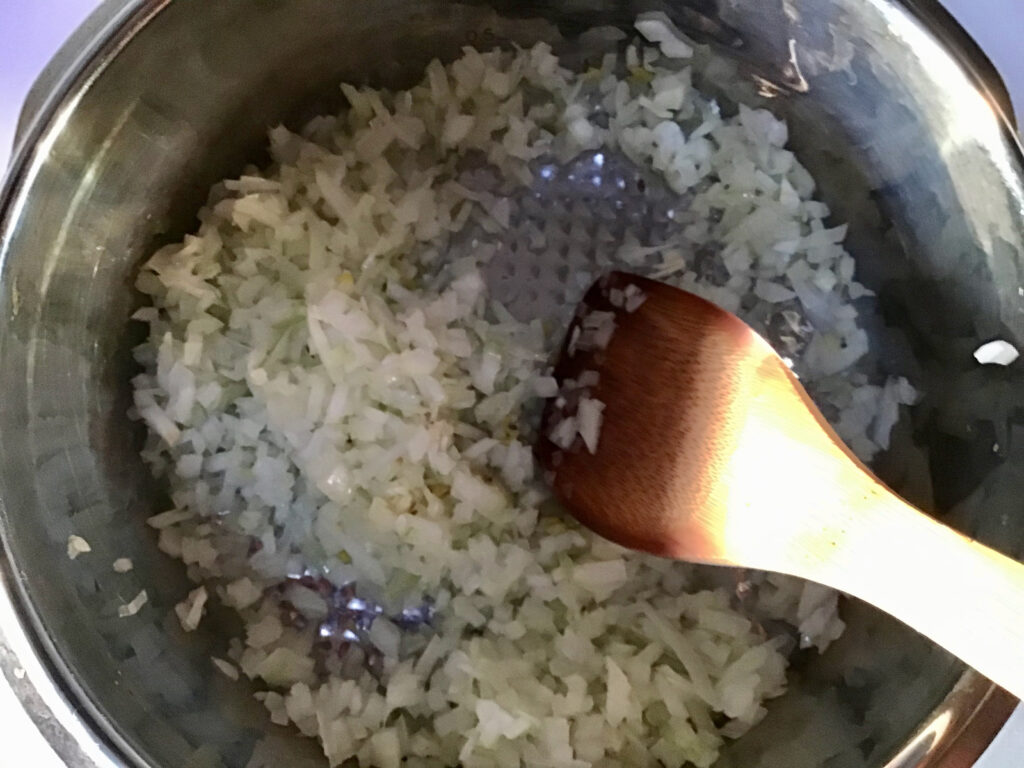
Sauté the onion for 10 min. 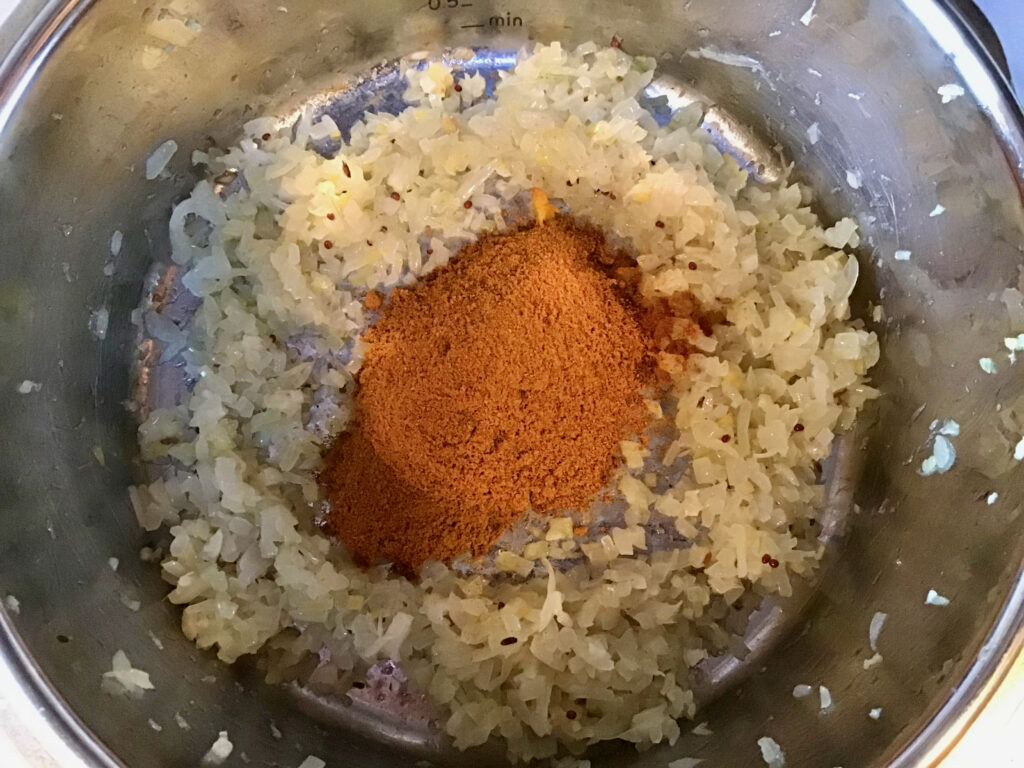
Add the curry powder 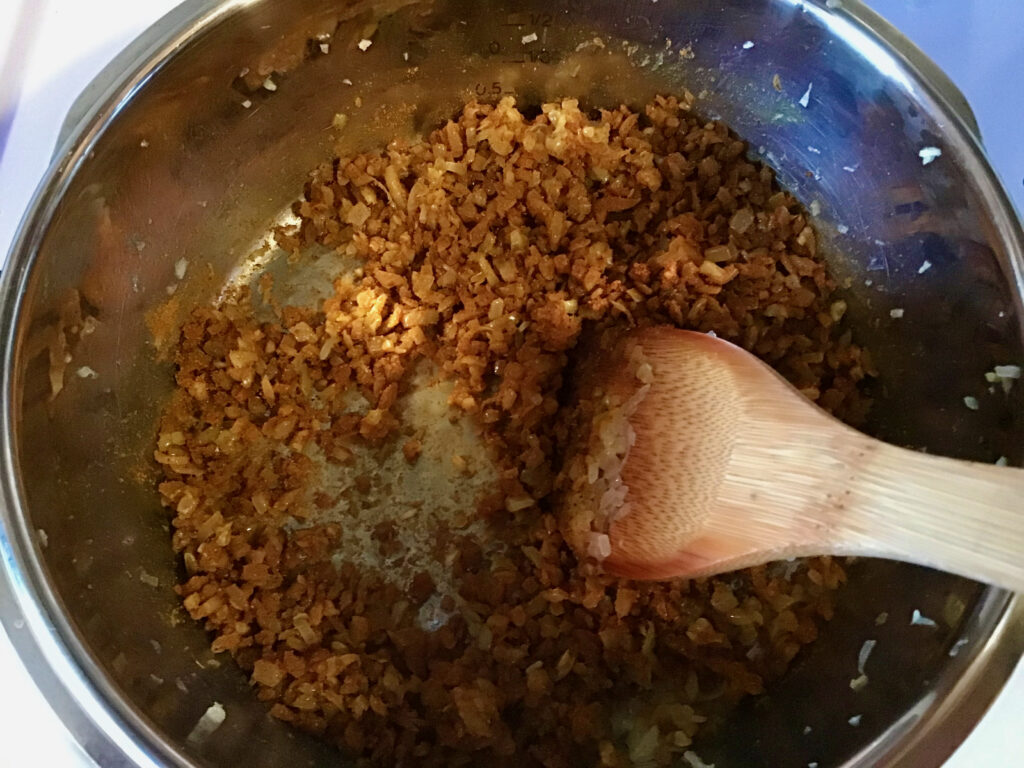
Mix well gently 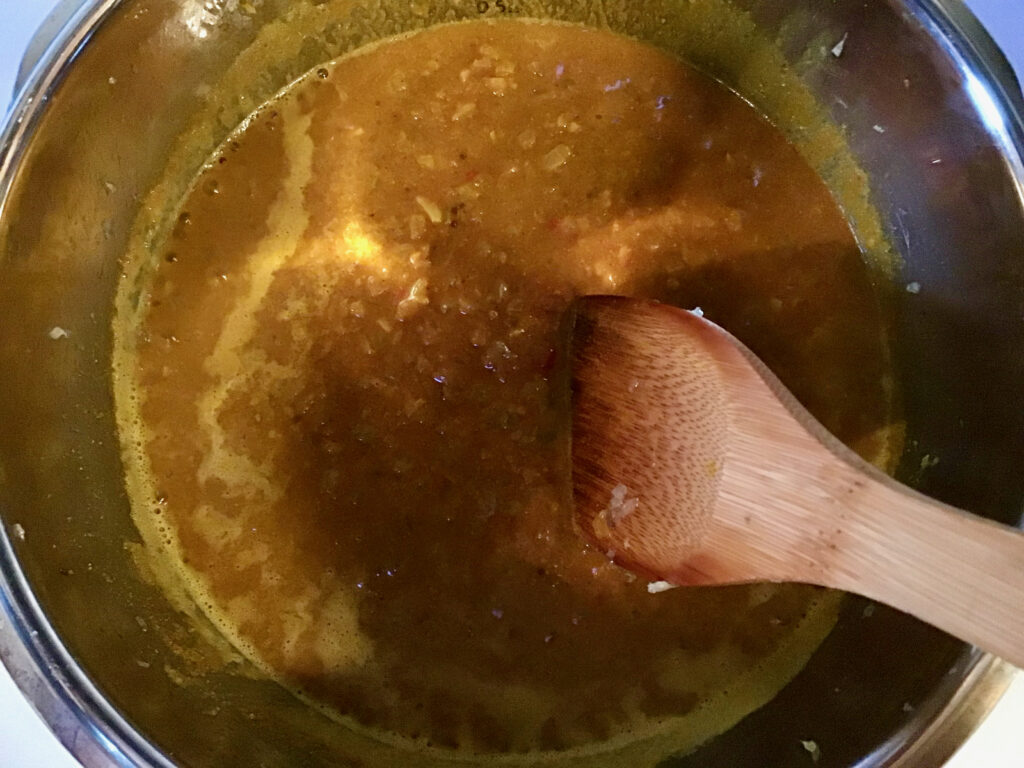
Add vegetable broth and seasonings. 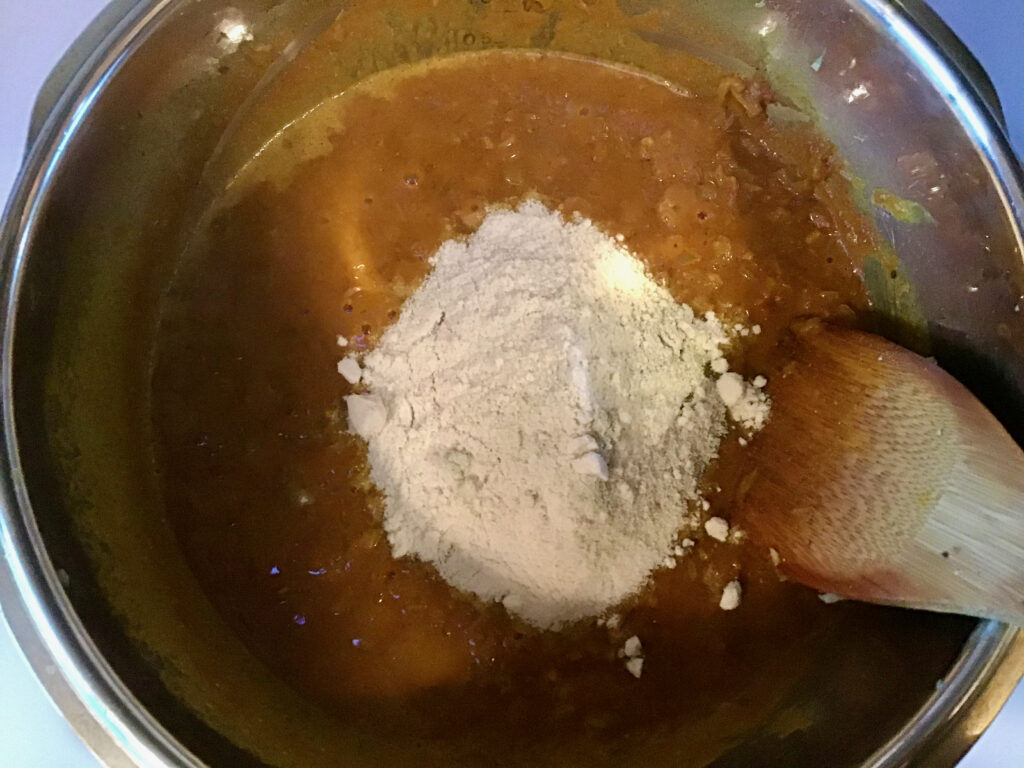
Add rice flour. 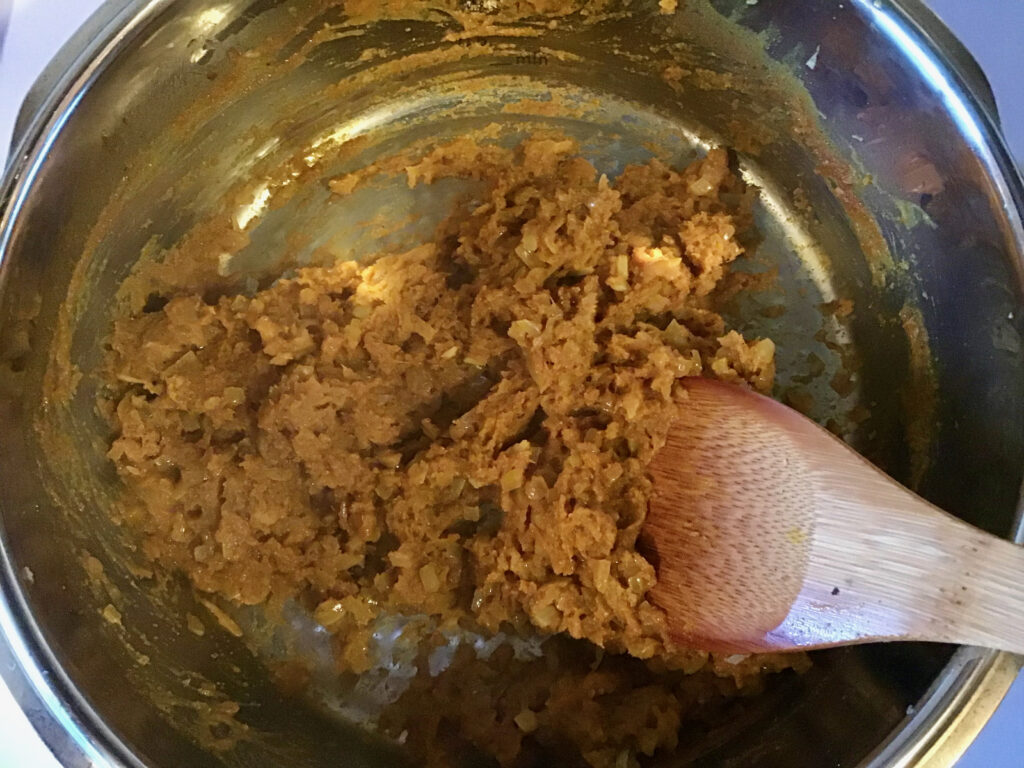
Stir until it becomes a beautiful paste. 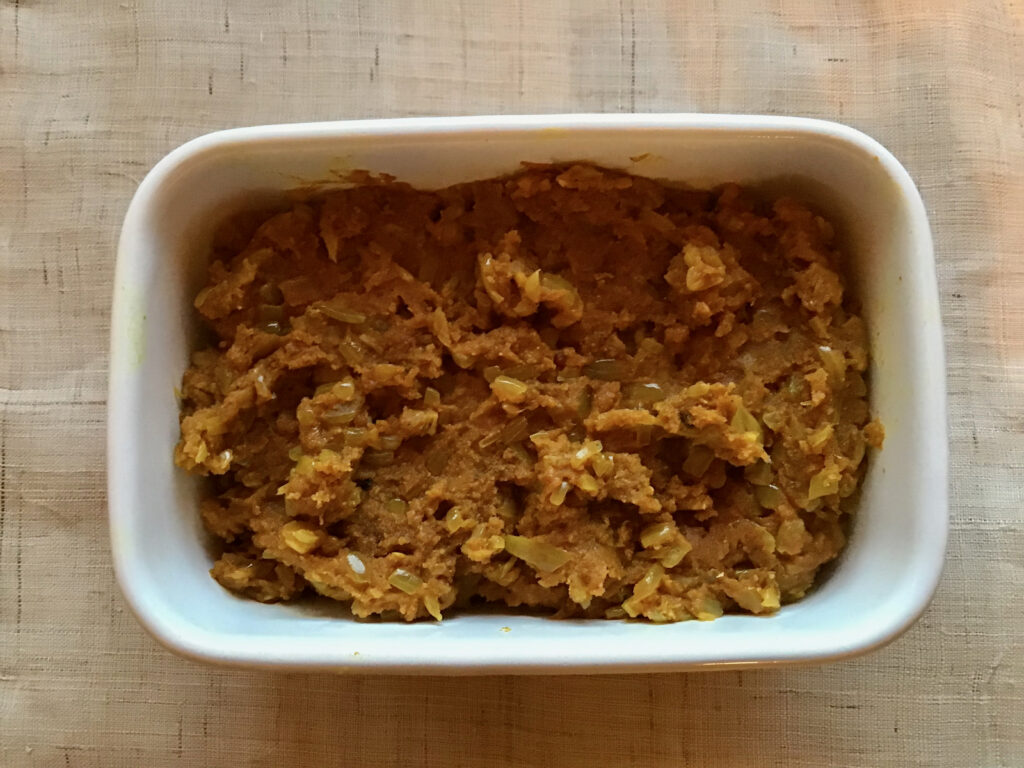
The curry was absolutely delicious!! Flavorful and aromatic sauce with deliciousness of the flavor and texture of each vegetable meeting with the rice cooked with the pressure cooker… Our body felt deeply nourished by all the nutrients of these ingredients and their alchemy, our tastebuds felt such joy in experiencing various combinations of delicious flavor, and it brings an uplifting feeling, eating each spoon full of curry and rice into mouth.
Such precious seasonal food. Next time when this curry will appear on our dining table, it will be around the same time, in 2022!
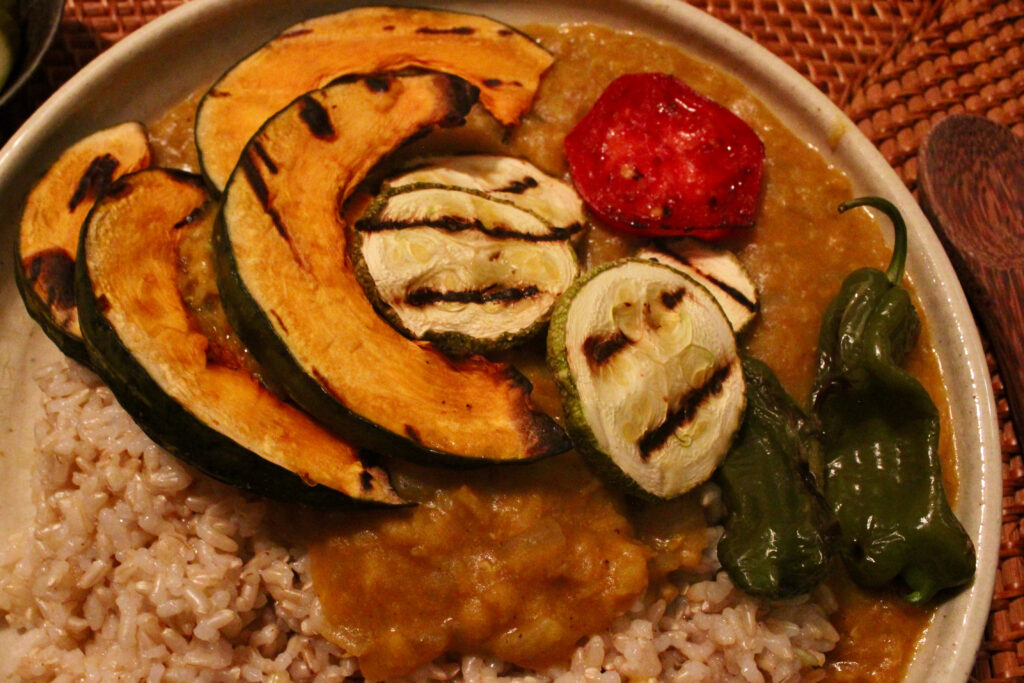
Japanese Vegan Grilled Vegetable Curry

Ingredients
- For gluten free curry paste:
- 1/2 medium size onion
- 1 tsp ginger
- 1 cloves garlic
- 1 1/2 tbsp curry powder
- 1/4 tsp cumin seed
- 1/8 tsp mustard seed
- 1/2 tsp tomato pest
- 1 tsp apple sauce
- 1 1/2 tbsp rice flour
- 1/2 cup vegetable broth
- 1 tsp soy sauce
- salt
- freshly ground black pepper
- —————
- For curry:
- 1 medium size onion
- 1/4 lb red lentil
- 150g pumpkin
- 1 zucchini
- 4 shishito
- 1 tomato
- 1 cup water
- 1 cup vegetable broth
- 1 bay leaf
- salt
- freshly ground black pepper
Directions
- Step 1 Make the curry paste following the recipe in the article.
- Step 2 Cut the onion into dices and have the red lentils rinsed.
- Step 3 Heat a pot at medium heat with coconut oil.
- Step 4 Put the onion in the pot and sauté at medium high heat until its color becomes half-translucent.
- Step 5 Pour in 1 cup of water, then add the rinsed red lentils with a bay leaf.
- Step 6 Put the lid on and turn the heat up to bring the broth to a boil. Once boiled turn the heat to low and simmer for about 10 minutes until the lentils are cooked.
- Step 7 Open the lid and add the curry paste. Pour in 1 cup of vegetable broth and stir well until everything is mixed well together.
- Step 8 Turn the heat to medium. Adjust the flavor and cook the curry until it reaches the desired texture.

